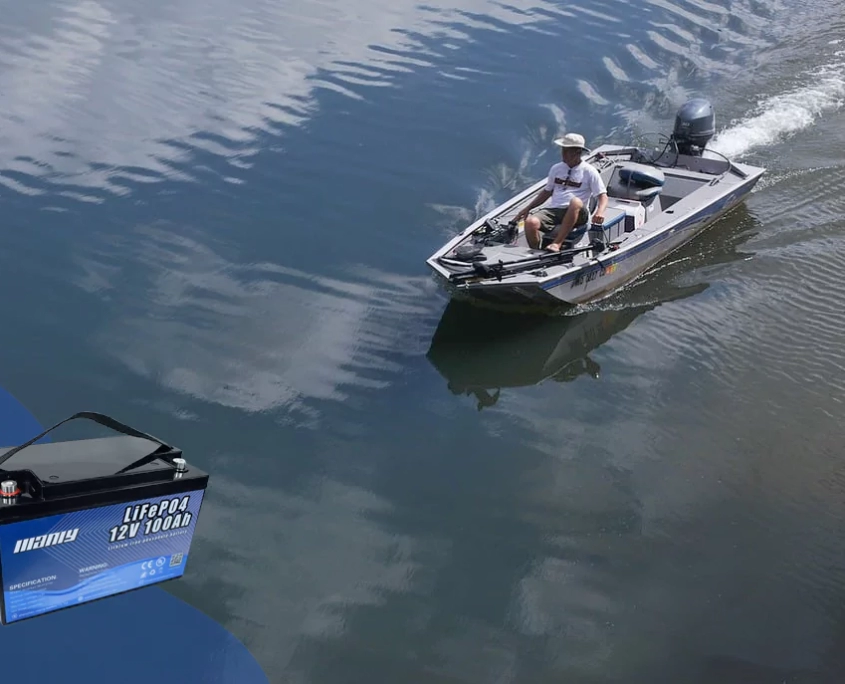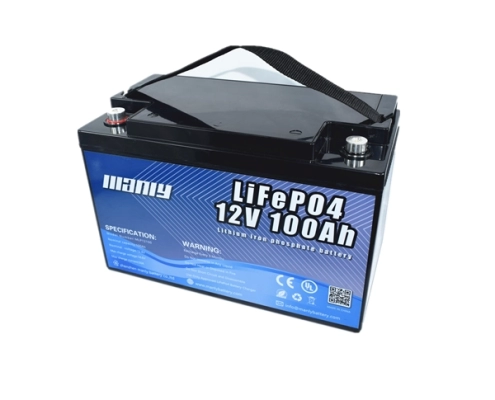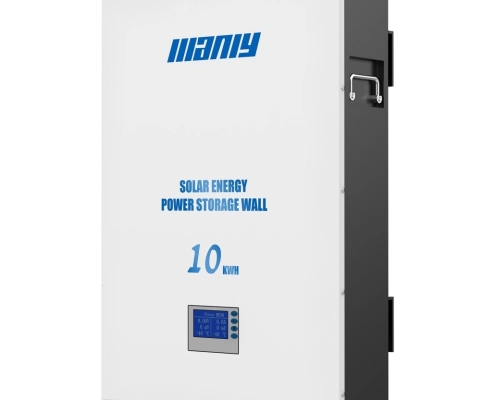What battery lasts the longest for a trolling motor?
Table of Contents
When it comes to selecting the best battery for your trolling motor, the choices can be overwhelming. From lead-acid and AGM to gel and lithium batteries, understanding the differences is crucial. Each type of battery offers unique advantages and disadvantages. This guide will help you navigate these options to find the longest-lasting and most reliable battery for your trolling motor. Whether you are looking for affordability, maintenance-free operation, or maximum longevity, there is a battery type that fits your needs. Let’s dive into the specifics of each battery type to help you make an informed decision.

Best Trolling Motor Battery Types
When it comes to choosing a battery for your trolling motor, you have several options. Understanding these types will help you make the best choice for your needs. The main types are lead-acid, AGM, gel, and lithium trolling motor battery.
Lead-Acid Batteries
Lead-acid batteries are like the trusted old friends of the battery world. They have been providing reliable power for many years. These batteries are affordable and widely used. However, they do require regular maintenance, such as adding distilled water. They are also quite heavy and can be bulky, which may not be ideal if you’re concerned about weight on your boat.
AGM Batteries
AGM, or Absorbent Glass Mat, batteries are a subtype of lead-acid batteries. They are sealed, spill-proof, and maintenance-free. These batteries can handle high power demands and have a longer lifespan than traditional lead-acid batteries. AGM batteries are more expensive but are worth the investment due to their reliability and ease of use.
Gel Batteries
Gel batteries are another type of lead-acid battery. They use a gelled electrolyte, which prevents spillage and leakage, making them safer. They are also maintenance-free and perform well under harsh conditions. However, they can be more expensive and may require special charging equipment to prevent overcharging.
Lithium Batteries
Now, let’s focus on lithium trolling motor battery types and their advantages. These batteries are relatively new on the market but have quickly become popular due to their many benefits.
Advantages of Lithium Trolling Motor Batteries
- Longer Lifespan: Lithium trolling motor battery can last significantly longer than lead-acid batteries. They typically offer between 2,000 to 5,000 charge cycles, compared to just 300-500 cycles for lead-acid batteries. This longevity translates to about 10 years of use, compared to 2-5 years for lead-acid batteries.
- Weight and Size: Lithium batteries are much lighter and more compact. They weigh about 40% less than lead-acid batteries and take up 20% less space. This weight reduction can improve your boat’s performance and make handling the battery easier.
- Energy Density and Efficiency: Lithium batteries have a higher energy density, meaning they can store more energy in a smaller space. They also provide a more consistent power output, even when the battery is low. For instance, a lithium battery can still offer 70% of its capacity even when discharged up to 90%, whereas a lead-acid battery might only provide 50% at the same discharge level.
- Minimal Maintenance: Unlike lead-acid batteries, lithium trolling motor battery requires almost no maintenance. There is no need to check electrolyte levels or add water, making them more convenient for regular use.
- Safety: Modern lithium batteries are designed with safety features to prevent overcharging and overheating. However, it is essential to use a charger specifically designed for lithium batteries to avoid any potential issues.
Conclusion
Choosing the right trolling motor battery depends on your specific needs and budget. If you are looking for a long-lasting, lightweight, and maintenance-free option, the lithium trolling motor battery is an excellent choice. It offers superior performance, reliability, and a better return on investment despite its higher initial cost.
Lead-acid, AGM, and gel batteries each have their own advantages and may be suitable for different situations. Lead-acid batteries are cost-effective but require more maintenance. AGM batteries offer better performance and are maintenance-free but come at a higher price. Gel batteries are safe and reliable under extreme conditions but may require special chargers.
In summary, understanding the different types of trolling motor batteries will help you select the best one for your needs, ensuring your boat operates efficiently and effectively on the water.
Key Factors for Long-Lasting Batteries
Battery Capacity and Amp Hours (Ah)
One of the most important factors in ensuring your battery lasts a long time is its capacity, measured in amp hours (Ah). This tells you how much energy the battery can store. A higher Ah rating means the battery can run your devices longer. For example, if you have a 100Ah lithium trolling motor battery, it means it can provide 100 amps for one hour or 10 amps for 10 hours.
To understand how long your trolling motor will run, you need to know the battery’s Ah rating and the motor’s current draw. For instance, if your trolling motor uses 50 amps per hour, a 100Ah battery will last:
Run Time (hours)=Battery Capacity (Ah) / Current Draw (A)
Run Time=100Ah / 50A=2 hours
In reality, other factors like wind, water conditions, and boat weight can affect this. However, this calculation gives you a basic idea.
Voltage Considerations: 12 Volt Trolling Motor Battery vs. 24V Trolling Motor Battery
Voltage is another crucial aspect. Trolling motors usually come in three voltage types: 12V, 24V, and 36V.
- 12 Volt Trolling Motor Battery: A 12V battery is common and works well for smaller motors. It’s easy to find and often cheaper. However, if you need longer run times or more power, you might need a higher voltage.
- 24 Volt Trolling Motor Battery: This system uses either two 12V batteries connected in series or one 24V battery. It provides more power and efficiency, which is great for larger motors or longer trips.
For example, a 24V 60Ah battery can provide power for a motor that draws 24A for about 2.5 hours. For more extended use, a 24V 100Ah battery is a better choice, giving you 4-5 hours of run time for a motor that draws 20-30A per hour.
Importance of Deep Cycle Capability for Longevity
Trolling motors need batteries that can handle being deeply discharged regularly, which is where deep cycle batteries come in. Unlike starter batteries that give a short burst of energy to start an engine, deep cycle batteries provide steady power over a longer time.
Lithium batteries, especially those with LiFePO4 (lithium iron phosphate) chemistry, are excellent for this purpose. They are designed to be discharged deeply and recharged many times without damaging the battery. LiFePO4 batteries can last for 2000 to 5000 cycles, compared to 300 to 500 cycles for traditional lead-acid batteries.
Additionally, LiFePO4 batteries provide consistent power output, even when they are nearly discharged. This means your trolling motor will keep running at peak performance until the battery is almost empty.
Practical Tips for Maximizing Battery Life
- Monitor Charge Levels: Regularly check your battery’s charge level and recharge it as needed to avoid deep discharges, which can shorten its lifespan.
- Proper Storage: Store your battery in a cool, dry place when not in use to prevent damage.
- Use a Battery Management System (BMS): A BMS protects your battery from overcharging, over-discharging, and other issues, ensuring it lasts longer.
Case Study
In a 2022 field test on Lake Michigan, a fisherman used a fully charged 12V lithium battery with 100Ah capacity. The trolling motor, with 50 pounds of thrust, operated for about 6-8 hours at moderate speeds before the battery needed recharging. This test highlighted the importance of considering all factors, such as wind and water conditions, which can impact actual run time.
In conclusion, to get the most out of your trolling motor, choose a lithium battery with the right capacity and voltage, and ensure it has deep cycle capability. By doing so, you’ll enjoy longer, more reliable performance on your fishing trips.
Top Choices for Long-Lasting Trolling Motor Batteries
When selecting a battery for your trolling motor, it’s important to choose one that offers long-lasting performance and reliability. Here are the top choices for long-lasting trolling motor batteries:
Best Lithium Trolling Motor Battery – MANLY 12v 100ah LiFePO4 Battery
The MANLY 12v 100ah LiFePO4 battery stands out among lithium options for its robust performance and reliability. This battery has been a trusted choice for many anglers over the years. The MANLY battery can be used in various configurations, including on the ice, in boats, and in kayaks.
One of the main advantages of the MANLY battery is its consistent power management. Whether fishing on hot 100-degree days or freezing days, this battery delivers reliable performance. For instance, during a series of fishing trips in both extreme heat and cold, the MANLY battery maintained its charge and only required recharging after the fifth trip. Charging is efficient, usually taking less than an hour, and the battery remains above 75% after each use.
The MANLY battery also offers excellent lithium chargers in 12V, 24V, and 36V options. This versatility makes it a great choice for various fishing needs, from small kayak applications to larger boat setups.
Pros:
- Proven reliability over many years
- Wide range of options for different needs
- Excellent warranty
Cons:
- Higher price point compared to some other types battery(Lead acid, AGM)
Maintenance and Care Tips
Maintaining your trolling motor battery properly can significantly extend its life and ensure it performs well during your fishing trips. Here are some essential tips and best practices for taking care of your trolling motor batteries.
Tips for Extending the Life of Your Trolling Motor Batteries
- Regular Inspections: Frequently check your battery for any signs of corrosion. Disconnect each connector and brush away any corrosion that you find. Reconnect the connectors securely; using wing nuts can make this easier, but tighten them with pliers to ensure they are secure.
- Corrosion Prevention: After cleaning, spray the connections with a corrosion-resistant spray to protect against future corrosion. This simple step can prevent many common battery issues.
- Monitor Battery Voltage: Regularly check the voltage of each battery. Ensure there’s not a significant drop in voltage from the battery to the connector, as this could indicate a wiring problem. Also, check the voltage while the batteries are charging to ensure your charger is working correctly.
- Listen to Your Motor: Pay attention to how your engine and trolling motor sound. If the engine struggles to start or the trolling motor doesn’t last as long, your batteries might be weakening. Early detection can prevent getting stranded on the water.
- Keep Records: Write down the purchase date and keep your battery receipts. This is crucial if you need to claim a warranty. Many stores will pro-rate your next battery purchase if it fails within the warranty period or replace the dead battery.
Proper Charging and Storage Practices
- Fully Charge After Each Trip: Always charge your batteries fully after each trip. Using partially charged batteries can cause them to develop a memory effect, leading to reduced capacity. Ensure your batteries are fully charged to maximize their lifespan.
- Use a Quality Charger: Invest in a good battery charger. Portable chargers work well, but an automatic charger is ideal. Automatic chargers shut down to a trickle charge or turn off when the batteries are fully charged. Onboard smart chargers, like those from Minn Kota, are excellent because they require less hassle, only need an extension cord, and are designed specifically for marine battery charging. They can charge multiple batteries to full and maintain them over long periods of inactivity.
- Maintain Lead Acid Batteries: If you are using lead acid batteries, regularly check the water levels. Use only distilled water, never tap water or battery acid from automotive stores. Always wear eye protection and rubber gloves when working on batteries to avoid accidents.
- Select High-Quality Marine Batteries: When purchasing batteries, choose high-quality marine deep cycle batteries. These batteries can handle repeated draining and charging better than automotive batteries and can withstand the rough conditions on the water. Some reliable brands include MANLY Battery, Interstate, Everstart, Deka, Optima, AC Delco, and Crown. High-end batteries are also available online and at local marine dealers.
- Install Breakers and Fuses: Breakers and fuses are crucial for the safety of your battery and accessories. Breakers allow you to turn off power during periods of inactivity, helping to keep the batteries fully charged. Fuses protect components like electronics from voltage spikes, preventing damage.
In conclusion, proper maintenance and care are essential for ensuring your trolling motor battery’s longevity and performance. By following these tips, you can keep your batteries in good condition and enjoy many successful fishing trips without battery issues.
Conclusion
Choosing the right trolling motor battery depends on your specific needs and budget. For those seeking a long-lasting, lightweight, and maintenance-free option, the lithium trolling motor battery is an excellent choice. It offers superior performance, reliability, and a better return on investment despite its higher initial cost. Lead-acid, AGM, and gel batteries also have their own advantages and may be suitable for different situations. Lead-acid batteries are cost-effective but require more maintenance. AGM batteries provide better performance and are maintenance-free but come at a higher price. Gel batteries are safe and reliable under extreme conditions but may need special chargers. Understanding the different types of trolling motor batteries will help you select the best one, ensuring your boat operates efficiently and effectively on the water.





